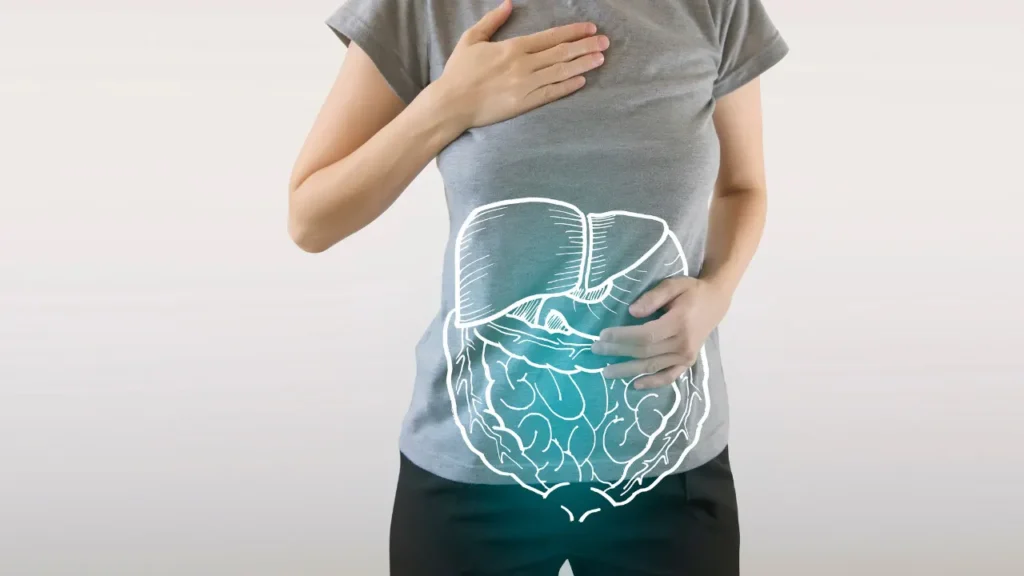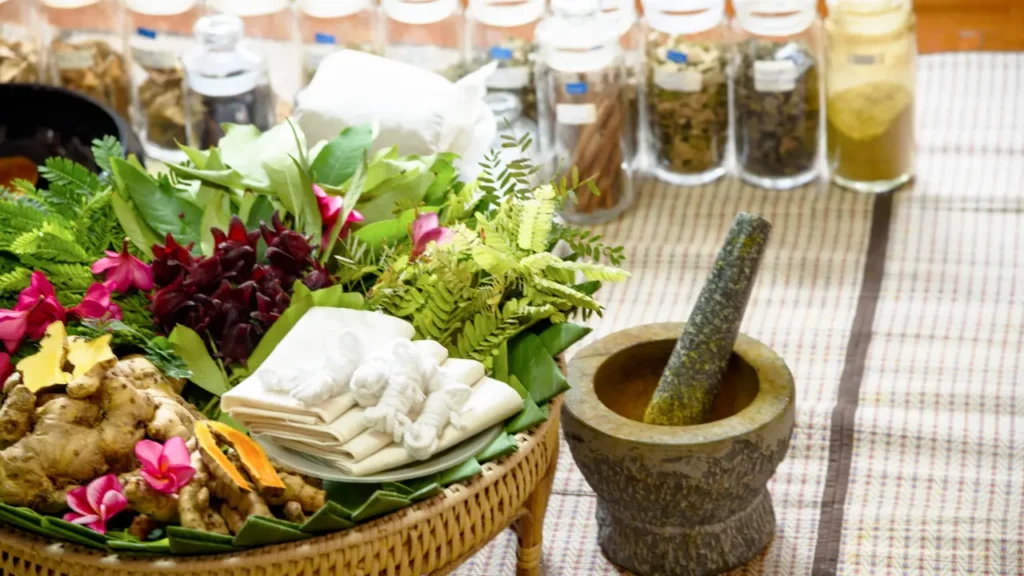Abscess Root (Polemonium reptans L.), often known as Spreading Jacob’s Ladder or False Jacob’s Ladder, is a native North American perennial herb. Native Americans and early settlers have always employed this flowering plant for its medicinal benefits. Despite its traditional usage in medicine, scientific study on Abscess Roots is sparse. This page will provide an in-depth review of the nutritional supplement’s nature, health benefits, appropriate dosage, adverse effects, probable substance interactions, and responsible use. In addition, the essay will investigate the chemistry of Abscess Root as well as the physiological mechanism of its influence on the body and brain.
You May Also Like:
5 Great Nootropic Herbs for Focus and Mental Clarity
5 Great Nootropic Herbs for Energy, Focus, and Productivity
Abscess Root: Benefits, Dosage, Side Effects, Drug Interactions, And Other Important Information is an original (NootropicsPlanet) article.
Nature of Abscess Root
Abscess Root is a member of the Polemoniaceae family endemic to eastern and central North America. It is a low-growing herbaceous plant with blue-violet blooms and complex leaves. The plant’s roots and rhizomes have traditionally been used to make therapeutic decoctions and extracts.
Health Benefits of Abscess Root
Abscess Root has traditionally been used to treat a wide range of diseases, including respiratory infections, skin issues, and digestive difficulties. Abscess Root is said to have the following health benefits:
- Anti-inflammatory and analgesic properties: Preliminary research suggests that Abscess Root may have anti-inflammatory and analgesic activities, which could explain its traditional usage in treating inflammatory disorders like abscesses, boils, and skin ulcers.
- Abscess Roots have been shown to have antibacterial capabilities against a variety of diseases, including bacteria and fungi. This may lend credence to its traditional usage in treating respiratory and skin illnesses.
- Gastrointestinal support: Abscess Root has traditionally been used as a digestive aid to alleviate gastrointestinal problems like indigestion, bloating, and diarrhea. Its anti-inflammatory, antibacterial, and antioxidant characteristics could all contribute to its probable modes of action.
- Nervous system support: Although research is limited, anecdotal reports suggest that Abscess Root can help the nervous system by lowering anxiety and encouraging calmness.
- Wound healing: Topically, Abscess Root has been used to promote wound healing and alleviate skin irritations, cuts, and bruises. Its anti-inflammatory and antimicrobial properties help cleanse and protect the skin, while its astringent effects may promote tissue repair.

Chemistry of Abscess Root
Abscess Root’s chemical contents are not thoroughly recognized because comprehensive phytochemical investigations have not been performed. Preliminary research indicates the existence of saponins, alkaloids, flavonoids, and tannins, all found in other therapeutic plants. These bioactive chemicals are most likely responsible for Abscess Root’s medicinal actions.
Physiological Mechanisms of Action
Because of the scarcity of scientific research on Abscess Root, the precise physiological mechanisms underpinning its action on the body and brain remain unknown. However, based on its historical use and preliminary study, the following mechanisms of action may be at work:
Anti-inflammatory qualities: The presence of bioactive components in Abscess Root, including flavonoids and tannins, may contribute to its anti-inflammatory activities. These chemicals may reduce inflammation and pain in many tissues by decreasing the creation or release of pro-inflammatory mediators such as cytokines and prostaglandins.
Antibacterial activity: Abscess Root’s antibacterial effects may be linked to substances such as alkaloids and saponins, which may interfere with the growth or function of many infections. These bioactive components may break bacteria and fungal cell walls or membranes, block key enzymes, or interfere with pathogen metabolic pathways, reducing microbial growth and infection control.
Abscess Root’s gastrointestinal effects could be attributed to its anti-inflammatory, antibacterial, and antioxidant qualities. By lowering inflammation and eliminating dangerous bacteria, Abscess Roots may help preserve the integrity of the gastrointestinal lining, prevent damage, and promote adequate nutrient absorption.
Antioxidant activity: Flavonoids and other bioactive chemicals in Abscess Roots may have antioxidant activity, which might neutralize damaging free radicals and reduce oxidative stress in the body. This function may contribute to the drug’s overall therapeutic effects by protecting the body from cellular damage and inflammation.
Support for the neurological system: Although the particular mechanisms are unknown, anecdotal evidence shows Abscess Root may have a good effect on the nervous system. Specific bioactive components in the plant are thought to interact with neurotransmitter systems or influence neuronal activity to promote relaxation and lessen anxiety. However, more research is needed to confirm these findings and understand the underlying mechanisms.
While the physiological mechanisms of Abscess Root activity are unknown, its possible health benefits can be linked to its supportive characteristics of its anti-inflammatory, antibacterial, antioxidant, and nervous system. More research is needed to fully understand the complex interconnections of Abscess Root’s bioactive components and their effects on the body and brain.

Optimal Dosage of Abscess Root
Because scientific study on Abscess Root is limited, no optimal dosage for its use as a nutritional supplement has been developed. Dosages in traditional medicine have changed depending on the condition being treated and individual considerations such as age, weight, and overall health. Usually, a decoction made from dried roots and rhizomes is taken orally. More research is needed to determine the best dosage and manner of administration for Abscess Root.
Side Effects of Abscess Root
Abscess Root’s side effects are little understood because of a lack of rigorous scientific research. However, some people may develop moderate gastrointestinal symptoms after taking Abscess Root decoctions or extracts, such as nausea, vomiting, or diarrhea. Allergic responses may occur in vulnerable individuals, as with any herbal supplement. Before utilizing Abscess Root, persons with pre-existing medical issues or those taking drugs should visit a healthcare expert.
Potential Substance Interactions with Abscess Root
Although the possibility for substance interactions with Abscess Root has not been well researched, examining the potential interactions based on its traditional use and preliminary study is critical. Some examples of possible interactions are:
Antibiotics: Because Abscess Root has antibacterial characteristics, it may interact with antibiotic drugs. Depending on the specific substances found in the Abscess Root and their action method, this interaction could either increase or decrease the efficiency of the antibiotic treatment.
Nonsteroidal anti-inflammatory medicines (NSAIDs): Abscess Root’s anti-inflammatory effects may interact with NSAIDs such as ibuprofen or naproxen. This interaction could increase the anti-inflammatory effects, raising the risk of adverse effects such gastrointestinal irritation or bleeding.
Antacids and proton pump inhibitors: Because Abscess Root has traditionally been used as a digestive aid, it may interact with gastrointestinal drugs such as antacids or proton pump inhibitors. This combination could affect the absorption or efficacy of various medications, resulting in different therapeutic outcomes.

Best Responsible Uses of Abscess Root
To use Abscess Root properly, keep the following points in mind:
- Seek the advice of a healthcare professional: Consult a healthcare expert before using Abscess Root or any other nutritional supplement, especially if you have pre-existing medical conditions or are using drugs. They can advise you on the proper use and dose.
- Use a reliable source: When purchasing Abscess Root, choose a reputable source because the quality and purity of herbal items might vary considerably. Look for a supplier with quality control systems in place and can provide information on the origin and processing of the plant material.
- Adhere to suggested dosages: Because there is no documented ideal dosage for Abscess Root, it is critical to adhere to the dosage recommended by the manufacturer or a healthcare expert. Monitor your body’s reaction and modify the dosage as needed.
- Be wary of potential side effects: Because the side effects of Abscess Root are unknown, be cautious and quit using if you encounter any negative responses. Talk to your doctor if you are concerned about side effects or interactions with other medications.
Abscess Root:
Conclusion
Abscess Root offers a range of potential health benefits rooted in its historical use in traditional medicine and emerging scientific research. It is a valuable botanical remedy with possible applications in supporting inflammatory conditions, promoting respiratory health, aiding digestion, wound healing, and enhancing overall well-being.
While Abscess Root offers promising health benefits, more research is needed to fully understand its mechanisms of action, optimal dosages, and potential interactions with medications. As with any herbal remedy, it’s essential to use Abscess Root under the guidance of a qualified healthcare professional, especially for individuals with specific health concerns or conditions. As interest in natural and holistic approaches to health grows, Abscess Root offers an intriguing avenue for exploration and integration into modern healthcare practices.

References:
- A Review of its Traditional Uses, Phytochemistry, and Pharmacological Activities. Link: https://www.researchgate.net/publication/335199684_Abscess_Root_Polemonium_reptans_L_-_A_Review_of_its_Traditional_Uses_Phytochemistry_and_Pharmacological_Activities
- Traditional and Modern Uses of Natural Honey in Human Diseases: A Review. Link: https://www.ncbi.nlm.nih.gov/pmc/articles/PMC3758027/
- Inhibition of Inflammatory Gene Expression in Keratinocytes Using a Composition Containing Carnitine, Thioctic Acid, and Saw Palmetto Extract. Link: https://www.ncbi.nlm.nih.gov/pmc/articles/PMC3148611/
- Polemonium reptans. Link: https://en.wikipedia.org/wiki/Polemonium_reptans
- Abscess Root – Uses, Side Effects, and More. Link: https://www.webmd.com/vitamins/ai/ingredientmono-266/abscess-root
- Jacob’s Ladder (Polemonium reptans). Link: https://www.fs.usda.gov/wildflowers/plant-of-the-week/Polemonium_reptans.shtml
Important Note: The information contained in this article is for general informational purposes only, and should not be construed as health or medical advice, nor is it intended to diagnose, prevent, treat, or cure any disease or health condition. Before embarking on any diet, fitness regimen, or program of nutritional supplementation, it is advisable to consult your healthcare professional in order to determine its safety and probable efficacy in terms of your individual state of health.
Regarding Nutritional Supplements Or Other Non-Prescription Health Products: If any nutritional supplements or other non-prescription health products are mentioned in the foregoing article, any claims or statements made about them have not been evaluated by the U.S. Food and Drug Administration, and such nutritional supplements or other health products are not intended to diagnose, treat, cure, or prevent any disease.


